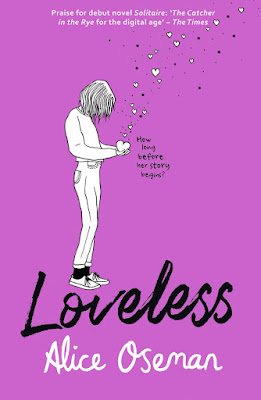It's a story as old as time. Most coming of age stories are about a search for identity, and it usually comes with the feeling of being alone. For the most part, nothing about "Loveless" is that revolutionary, becoming a story about trying to understand the struggles to fall in love and find a deeper connection. However, Oseman provides an interesting twist that ends up making it an essential text within youth queer literature. The protagonist is not someone who winds up falling in love by the end but learns to love herself for what she has achieved. There are the familiar stumbles along the way, but most of all "Loveless" gives readers a unique read on what it means to be young and confused. It's a story of identity that hasn't been explored as often, and the attention to detail makes it essential for anyone questioning who they are and what they want out of life.
For most people, the high school narrative is fairly straightforward. One day you find "the one" and begin pursuing them. By the end, whether it be in high school or beyond, you fall in love and settle down. For the protagonist of this story, it's not that simple. She is about to graduate and must experience the highs of youth culture. She must be kissed. She must know what it's like to be so uncontrollably attracted to someone. It's a moment that begins the book, and the conclusion is as ironic as it is sad and tragic. Thanks to Oseman's ability to look inside at every insecurity with loving care, she finds a study of identity forming even with uncertainty. Language isn't there for her. She must understand why she's not experiencing sexual or romantic attraction.
For most people, the high school narrative is fairly straightforward. One day you find "the one" and begin pursuing them. By the end, whether it be in high school or beyond, you fall in love and settle down. For the protagonist of this story, it's not that simple. She is about to graduate and must experience the highs of youth culture. She must be kissed. She must know what it's like to be so uncontrollably attracted to someone. It's a moment that begins the book, and the conclusion is as ironic as it is sad and tragic. Thanks to Oseman's ability to look inside at every insecurity with loving care, she finds a study of identity forming even with uncertainty. Language isn't there for her. She must understand why she's not experiencing sexual or romantic attraction.
In queer circles, this is a book that has come to be hailed as essential reading for aromantic and asexual identities. The story that follows reflects on the bumps along the way to understanding what that means to her as an individual. By putting it into practice, it connects readers with the ideas in ways that will hopefully reach the right audiences and create a deeper understanding of how normal these feelings are. There's ultimately a celebration, a recognition of not being broken inside. The optimism and accessibility of the language make this a feel good story that develops something akin to a warm hug. For those wanting to better understand aromantic and asexual identities, or even combined, this would be a great place to start as it breaks it down through fiction in a way that is never too academic and instead gets to the emotional core of the conflicts.
One should know that while this book is ultimately about identity, it's not one totally defined by the terminology. These characters get into awkward situations that are more reflective of being young adults who have no grasp of the world. It's the familiar goofy mistakes and petty fighting with friends that one would expect from a novel like this. The results are yet another group of endearing characters from Oseman who has a gift for making the youthful naivety shine through in every page. She encourages the reader to relate to the characters in a way that opens things up that are personal and meaningful.
Some could complain that this is a text that only appeals to young adults, but I'd argue it's not a bad thing. There's enough universality in "Loveless" to create a text that covers a general experience of aromantic and asexual identities. It's a chance to normalize something that is often considered taboo and recognizes that it's more common than readers would think. Maybe they even have felt that way. While it's likely that Oseman will always be more beloved for "Hearstopper," she has a knack for finding the humanity of young voices and elevating them into something more real and powerful. This isn't a great book because of what it chooses to study, but it's a great book because it manages to point out the interconnected way that life is more than one thing. Once you learn to feel less alone, you can begin to live, and that's where the story thrives best. It's beautiful in that way.

No comments:
Post a Comment